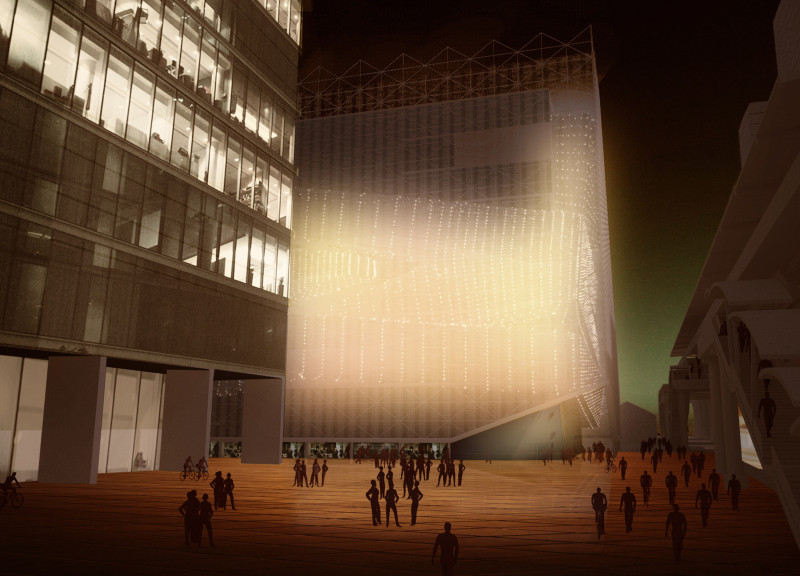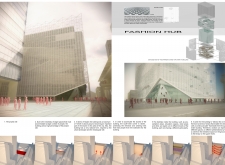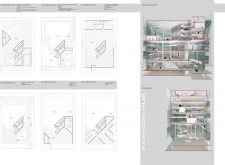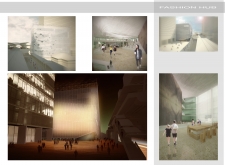5 key facts about this project
At its core, the project represents a synthesis of architectural form and function, designed to resonate with the dynamic nature of the fashion world. The design emphasizes an open and inviting atmosphere, encouraging visitors to explore and interact with the various offerings of the hub. The spatial arrangement is carefully crafted to facilitate movement throughout the building, allowing for natural circulation and discovery. As visitors enter the structure, they are greeted by expansive spaces that house presentation areas, classrooms, and retail environments, all interconnected through well-defined circulation paths.
A unique aspect of the Fashion Hub lies in its architectural design elements. The facade is characterized by a distinctive texture inspired by fabric, which not only enhances the aesthetic appeal but also challenges traditional perceptions of building exteriors. This design choice reflects the essence of fashion, creating a dialogue between the building and its thematic focus. The layered facade generates visual interest, playing with light and shadow throughout the day and transforming the building into a dynamic urban landmark.
The selection of materials further underscores the project's commitment to contemporary architectural principles. Glass is prominently used to create transparency and provide ample natural light, enhancing the overall experience within the space. Steel serves as a crucial structural component, ensuring the building's durability and longevity. Concrete is utilized in foundational aspects, providing a strong base for the elevated structure, while wood elements are incorporated in interior spaces to create a warm and welcoming environment.
In terms of design approach, the Fashion Hub integrates innovative strategies that cater to both private and communal experiences. The outdoor spaces surrounding the building are designed to accommodate a variety of events and activities, reinforcing the hub's role as a community center. Large plazas encourage social interaction and provide a space for public gatherings or displays, further enhancing the cultural vibrancy of the area.
Lighting also plays a pivotal role in shaping the building's atmosphere. The architectural design considers not only the functional aspects of lighting but also its aesthetic implications, ensuring that the exterior of the Fashion Hub remains visually engaging at night. This thoughtful approach serves to attract visitors, positioning the building as a focal point in the urban landscape.
Overall, the Fashion Hub is a significant contribution to contemporary architecture, striking a balance between functionality and thematic expression. Its commitment to fostering community engagement while providing a platform for the fashion industry demonstrates a forward-thinking vision for urban design. Readers interested in delving deeper into the nuances of the Fashion Hub should explore the project's architectural plans, sections, and designs to gain a comprehensive understanding of its architectural ideas and how they contribute to the overarching vision of the space.

























